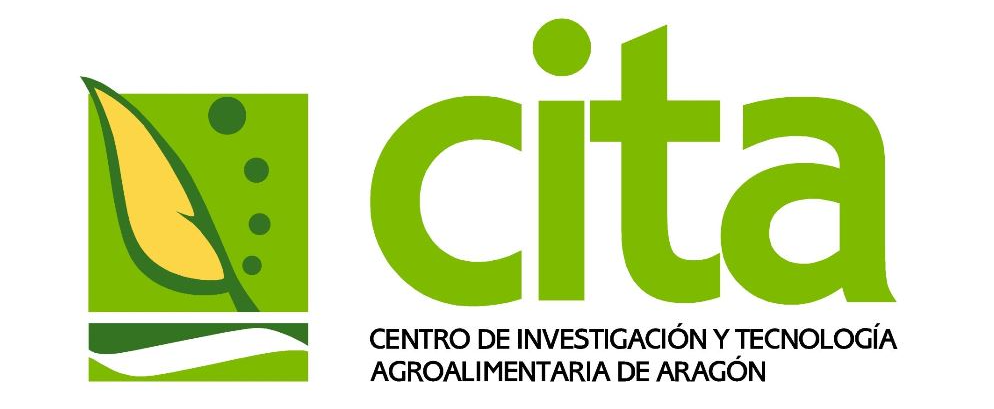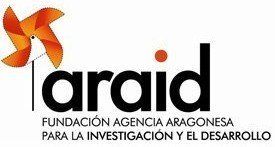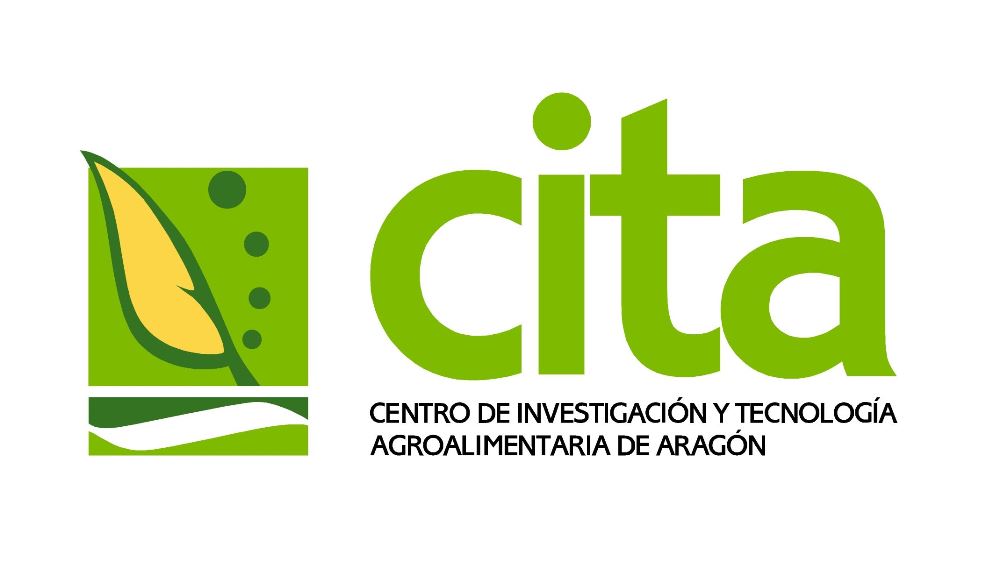Projects
Projects
Research Projects
12/2022-11/2024
Project Ecological and Digital Transition:
Manage4Future: Towards effective management practices to enhance carbon sequestration and climate change adaptation of Spanish Quercus
forests
Funding: Convocatoria 2021 - «Proyectos Transición Ecológica y Transición Digital» , Ministerio de Ciencia e Innovación, Fondos NextGeneration UE, Plan de Recuperación, Transformación y Resiliencia, Agencia Estatal de Investigación
The main goal of the project is to evaluate the effect of thinning practices on the carbon sequestration capacity and climate change adaptation of Quercus ilex forests in the short- and long-term.
The specific scientific objectives are to examine the effect of thinning on:
(1) the long-term carbon sequestration, (2) the short-term carbon sequestration and evapotranspiration, (3) the water use efficiency of Quercus ilex forests, and (4) the physiological response of Quercus ilex forests against climate extremes.
The methodological objectives are:
(1) to compare above-ground CO2 and H2O gas exchange estimates performed at leaf, tree and ecosystem levels, (2) to validate the model-based approaches to partition net ecosystem CO2 and H2O fluxes through experimental approaches, and (3) to integrate micrometeorological, ecophysiological and multispectral methods to monitor the physiological response of Quercus ilex forests against climate variability.
01/2022-12/2026.
Project ANR MaCCMic: Impact of forest Management and Climate Change on understory Microclimate
Funding: ANR Generic call for proposals 2021, CE32 - Dynamique des socio-écosystèmes et de leurs composants en vue de leur gestion durable « Instrument de financement : Projet de Recherche Collaborative (PRC) »
The objective of MaCCMic is to develop tools that will help identify the main factors influencing forest understory microclimate and anticipate the impact of forest management (density, fragmentation, thinning, choice of species, understory removal, etc.) and climate change on forest microclimate and understory vegetation, notably in terms of climate extremes.
Bringing together long-term datasets of understory microclimate, state-of-the-art LiDAR and Sentinel2 products and biophysical forest microclimate modelling, we will quantify how understory microclimate is modified by local factors (canopy closure but also forest structure and functional diversity), landscape features (topography, but also the proximity of a river or the degree of fragmentation of the surroundings) and climate change (notably increasing atmospheric CO2 and its effect on plant physiology and forest regeneration).
06/2020-05/2023.
CO2PPICE:
La gestión forestal como herramienta revitalizadora del monte bajo de quercíneas: reactivación de sumideros de carbono y otros servicios ecosistémicos.
Proyecto Retos Investigación PID2019-106701RR-I00
Funding: Ministerio de CIencia e Innovación, Agencia Estatal de Investigación, PI: J.P. Ferrio.
The ability of oaks to resprout quickly after cutting was exploited by a traditional forest management practice, known as coppicing. However, this traditional practice has been largely abandoned, leading to overaged, unproductive and highly vulnerable forests.
In this context, selective thinning of abandoned coppices has been promoted to reduce forest decline, but the elevated labour costs have prevented a widespread application.
The aim of this project is to assess the effect of adaptive management plans on carbon and water balance, and the associated ecosystem services, namely 1) biomass production, 2) carbon sequestration, 3) water infiltration (blue water), 4) reduced vulnerability, 5) mycological production, and 6) potential for recreational use.
01/2019-12/2020.
Analizador portátil de isótopos estables para cuantificar y trazar el origen metabólico de los flujos de CO2
en suelos, organismos vivos y ecosistemas.
EQC2019-006371-P
Funding: Ministerio de Ciencia e Innovación /AEI / FEDER, PI: J.P. Ferrio.
This is an infrastructure funding, aimed to develop and consolidate different research lines sharing the need to estimate accurately carbon fluxes and their metabolic origin. These activites are aimed at different organization level and spatial scales, such as soils, microorganisms and fungi, plants, animals, forest ecosystems and agricultural systems.
The proposal supported the acquisition by CITA of a stable isotope analyser based on near infrared spectroscopy (Thermo Delta-Ray), field-deployable and allowing the simultaneous determination of the stable isotope composition of carbon and oxygen (d13C and d18O, respectively) in CO2 (continuous mode), as well as the sequential analysis of flask and vial samples.
01/2018-12/2021.
GYPWORLD:
A global initiative to understand gypsum ecosystem ecology.
MSCA-RISE-2017-777803. PI: Sara Palacio (CSIC-IPE).
This project has received funding from the European Union’s Horizon 2020 research and innovation programme under grant agreement No 777803 (Marie Slodowska-Curie RISE). Disclaimer: this summary reflects only the author’s view and the Research Executive Agency of the European Commission is not responsible for any use that may be made of the information it contains.
The GYPWORLD project aims at an integrated global study of the ecology and evolution of plant and lichen life on gypsum, including eight gypsum-rich regions from four continents that differ in geological origin, climate, and flora. In particular, the project aims to:
1) Assess the plant and lichen diversity of gypsum
2) Investigate the evolutionary origins and assembly of these floras
3) Evaluate potential adaptive mechanisms on gypsum, the functional structure of gypsum plant and lichen communities, and the processes regulating gypsum ecosystem function
4) Analyse the responses of gypsum communities to global change drivers and explore how gypsum ecosystem restoration/conservation may help mitigate the effects of global change
5) Promote the study of gypsum ecosystems
6) Communicate the ecological and conservation value of these ecosystems to the public
12/2016-12/2018.
La cara oculta de la eficiencia hídrica: aplicación de isótopos estables al estudio de la coordinación entre conductancia del mesófilo para CO2 y conductancia hidráulica en hojas. 216.111.062-10IN.
Funding: VRID- Univ. de Concepción, PI: J.P. Ferrio.
The general aim of this project is to assess the coordination (and eventual uncoupling) between water and CO2 pathways through the mesophyll. Specifically, the project has two major objectives:
1) From a basic science perspective, we aim to disentangle the interaction between the CO2 and water pathways within the leaf mesophyll, exploring the anatomical and physiological drivers for leaf hydraulic conductance (KL) and mesophyll conductance for CO2 (gm).
2) From a methodological point of view, we aim to provide empirical and mechanistic evidence to develop a non-destructive, isotope-based dynamic measure of KL, comparable to those currently existing for gm.
Methods: hydraulic conductance, Stable isotopes, mesophyll conductance
04/2017-03/2018.
Eucahydro 2.0: Modelo predictivo de sustentabilidad hídrica para determinación del uso de agua, eficiencia del uso del agua, uso eficiente del agua y resistencia a la sequía de genotipos y plantaciones de Eucalyptus.
IT16I10087.
Funding: 'V concurso de investigación Tecnológica del fondo de fomento al desarrollo científico y Tecnológico', programa IDEA', FONDEF/CONICYT (Chile). PI: R: Rubilar (UdeC).
THe aim of this project is to develop and validate predictive models of water use, water use efficiency and drought resistance in Eucalyptus genotypes, including the application of stable isotopes for the study of whole-plant water use and water-use efficiency.
01/2016-12/2018.
FUTURPIN-ECOCLIM: Aproximaciones ecofisiológicas y respuesta al clima en pinos mediterráneos: relevancia para la gestión futura de sus recursos genéticos.
Funding: Programa Nacional de Agricultura (AGL-AGR), Ministerio de Economía y Competitividad (AGL2015-68274-C3-3-R). Current IPs: Jordi Voltas, Esther Sin (Univ. Lleida).
The aim of this project is to interpret the adaptive framework of the most characteristic pine species of the Iberian Peninsula from the point of view of the variability in intraspecific responses to the environment. The first main objective is to develop applications of emerging technologies in the field of forest genetics: ground-penetrating radars to explore root architecture, high-resolution spectroradiometry to determine vegetation indices at the individual level, and LIDAR techniques as a proxy for in-field measurements of growth and canopy structure. The second main objective is to maximize the information derived from transnational trial networks of Mediterranean pines, applying dendrochronology together with advanced statistical methods in order to define the spatial and temporal dimensions of the intraspecific responses to climate.
2016-2018.
SED-IBER- Thirst in the river: How a warming climate and changes in fluvial dynamics are driving the decline of riparian forest.
Funding: Fundación BBVA. PI: J.J. Camarero (IPE-CSIC).
The aim of this project is to compare the structure of the riparian ecosystem, attain the retrospective assessment of its tree growth (using dendrochronology) and to estimate its water use (by reference to the natural abundance of stable isotopes like C, O and H).
07/2014-03/2015.
The carbon and water balance upside down: linking root respiration and water uptake in whole trees.
Funding: FY 2014 JSPS long-term invitation fellowship (L-14560), Japan Society for the Promotion of Science. Responsible: Juan Pedro Ferrio (Univ. Lleida, researcher), Shigeta Mori (Yamagata University, Japan, host).
The aim of this project is to determine whether there is a connection between the water uptake capacity of roots and their respiratory activity. It is well known that soil and root respiration is driven by water availability, but also depends on the rate of export of sugars from the leaf, while photosynthesis at the leaf level is enhanced by water availabilty, thus providing more substrate respiration. Trees of different species, ages and sizes will be uprooted and respiration measured using custom-made incubation chambers. We will then assess coordinated spatial and temporal dynamics in respiration and water uptake patterns.
08/2013-09/2013.
CIRFLUX- Act locally, think globally: do circadian rhythms in leaf mesophyll hydraulics affect terrestrial water fluxes?.
Funding: ExPeER Transnational Access Progamme, European Infrastructure project (2010-2014, FP7-European Union). Responsible: Juan Pedro Ferrio (Univ. Lleida). Hosting institution: CNRS-European Ecotron, France.
The ExpeER transnational access aimed to contribute to an on-going experiment on cotton and bean mesocosms in the Ecotron, coordinated by V. Resco de Dios (University of Western Sydney) and A. Gessler (ZALF, Leibniz Institute Berlin). The general aim of this experiment was to test for a circadian regulation of day-time transpiration at the leaf level that scales up to affect whole ecosystem water fluxes, and to disentangle the underlying mechanisms. Within this framework, the specific aim of the stay were to: 1) determine whether the mechanism by which the circadian clock controls stomatal conductance also influence the expression of different aquaporin families in the mesophyll, thus affecting either mesophyll conductance for CO2 and H2O, or both, 2) to quantify to what extent circadian rhythms in leaf water evaporative enrichment could affect the stable isotope composition of ecosystem gas exchange, and thus partition models based on them, and 3) to assess the response of effective path length and mesophyll parameters to drought, going beyond time-integrated differences, to look at its effect on diel patterns of leaf water enrichment.
2013-2016.
FENOPIN- Phenotypic integration, plasticity and evolutionary trade-offs among life history traits in Iberian pines: implications for managing genetic forest resources under new environmental scenarios.
Funding: MCINN, Spanish Government. AGL 2012-40151-C03. Responsible: Rafael Zas (CSIC-MBG, coordinator and PI subproject 1), José Climent (INIA-CIFOR, coordinator and PI subproject 2), Jordi Voltas (Univ. Lleida, PI subproject 3).
The overall aim of this project is to evaluate the intraspecific genetic variation and phenotypic plasticity in three Mediterranean pine trees species (P. pinaster, P. sylvestris and P. halepensis) simultaneously in a large set of phenotypic traits related to growth, reproduction, resistance to herbivory and drought tolerance, and to explore the existence of tradeoffs among those traits. The specific objectives are: 1. To determine at what extent evolutionary tradeoffs among life history traits have conditioned the differentiation between this pine populations, 2. To understand the cause of the physiological constrains involved in possible trade-offs, and the relevance of reduced water availability as a driver of the emergence of those tradeoffs. 3. To identify by means of artificial selection experiments whether the tradeoffs among life history traits can constrain the adaptive response of pine populations to future selection events drove by global change-derived pressures.
2013-2016.
RESILFOR- Forest resilience in a changing context: the role of stand attributes, disturbance characteristics and management techniques.
Funding: MCINN, Spanish Government. AGL 2012-40039-C02. Responsible: Lluis Coll (CTFC, coordinator and PI subproject 1), Jesús Pemán (Univ. Lleida, PI subproject 2).
RESILFOR aims at getting better understanding in the knowledge of the ecological principles that may sustain new management models oriented to increase the self-adaptive capacity and resilience of forest ecosystems in the view of global change. In particular, the objectives of the RESILFOR project are: (1) characterizing the response mechanisms of forest ecosystems with diverse structures and compositions to different types of disturbances, (2) assessing the role of both land-use and ecological factors in the diversification of monospecific Pinus stands, (3) evaluating the use of enrichment plantations (using different deciduous species ) in the understory of monospecific Pinus stands as a technique to increase the adaptive capacity of the system to changing conditions and (4) analyzing the functioning and dynamics of mixed stands composed by species with different response strategies in the face of disturbances (Pinus-Quercus systems) in the present climate-change context.
2013-2014.
VITAMAIZE- High quality and safe food through antioxidant fortified maize.
Funding: RECERCAIXA Foundation. Responsible: Paul Christou (Univ. Lleida).
VitaMaize is a multidisciplinary project covering the whole food production chain in a unique case study to assess the potential implications of the use of genetically-modified maize enriched in Carotenoids, from the ecophysiological and agronomic context to the food-processing industry, going through animal feeding assays.
2012-2013.
Arqueologia Experimental al Camp d'Experimentació de la Protohistòria de Verdú (CEP): recerca i servei als centres educatius.
Source: RECERCAIXA Foundation. PI: Natàlia Alonso (Univ. Lleida).
07/2012-08/2012.
Physiological response of rice genotypes to increasing CO2 and temperature.
Funding: FY 2012 JSPS short-term invitation fellowship (S-12092), Japan Society for the Promotion of Science. Responsible: Juan Pedro Ferrio (Univ. Lleida, researcher), Toshihiro Hasegawa (NIAES, Japan, host).
The main objective of the JSPS short-term stay was to take part in a field experiment in which CO2 was artificially increased in open-air conditions (FACE), to test the potential effect of predicted increase in CO2 concentration and temperature on plants, and in particular on rice crops.
2011-2012.
Stable isotope analysis of alpha-cellulose of trees affected by flooding events.
Reseach contract between Instituto Geológico y Minero de España and Universitat de Lleida. Responsible: Juan Pedro Ferrio (Univ. Lleida), Andrés Díez (IGME)
The aim of this preliminary study was to assess the potential use of stable isotopes from tree rings as markers for the origin of extreme precipitation events.
2011-2012.
Study of induced and acquired resistance in response to bioproducts in Tomato.
Reseach contract between Sustainable Agro Solutions and Universitat de Lleida.
Responsible: Vicente Medina (Univ. Lleida)
The aim of this project was to assess at different physiological and molecular levels the impact of a set of resistance-inducing bioproducts as tools to prevent viral diseases in Tomato.
2010-2012.
PALEOISOMED-Isótopos estables en ecosistemas mediterráneos forestales y agrícolas: del fraccionamiento isotópico a la aplicación paleoambiental
Funding Source: MCINN, Spanish Government. CGL2009-13079-C02. Responsible: Juan Pedro Ferrio (Univ. Lleida, Coordinator and PI subproject 1), Salvador Nogués (Univ. Barcelona, PI subproject 2)
This project aims to expand the use of stable isotopes from archaeobotanical remains as palaeoenvironmental proxies. Bearing in mind the questions raised in previous projects, the first objective of the project is to further understand fractionation processes of carbon and nitrogen isotopes and to explore the use of other non-traditional stable isotopes (Sr, Pb, Zn) in Mediterranean vegetation. This will be used to refine their application as palaeoenvironmental proxies, previously developed by the applicants. As a secondary objective, the project aims to provide local and regional reconstructions of 1) climate for the Iberian Peninsula during the last 8,000 years and 2) the water and nutrient status and productivity of main cultivated crops during this period.
2009-2012.
SMARTREES-Stable isotopes and Mediterranean ARidification: Tree Rings in Ecological and Environmental Studies
Funding Source: Marie Curie Programme, European Union, 7th FP. PERG05-GA-2009-246725. Responsible: Juan Pedro Ferrio (Univ. Lleida)
One key to understand long-term plant responses to climate changes is to characterise and interpret the physiological information laid down in natural archives in the past. For woody plants with secondary growth the tree rings provide an easily datable archive that can be explored for physiologically relevant signals. In turn, tree ring information can be also used for reconstructing the environmental conditions under which plant growth occurred, thus providing climate information of the past that might help to understand the present and future development of the climate. However, certain uncertainties in isotopic models in plants have raised in recent years and need to be addressed to provide a better interpretation of tree-rings. The aim of the project is to further understand fractionation processes of carbon and oxygen isotopes and their potential application as ecophysiological and palaeoenvironmental tools.
2009-2014.
Mechanisms, and genotype and environmental variability of stable isotopes in plants
Funding Source: MCINN, Ramón y Cajal Programme, Spanish Government. RYC-2008-02050. Responsible: Juan Pedro Ferrio (Univ. Lleida)
The main focus of this grant is to develop the use of stable isotopes (carbon and oxygen) as integrative measures for plant water use and water use efficiency. This will involve 1) basic research to improve the understanding of the underlying mechanisms determining stable isotope composition in plants and their relationship with physiological processes, and 2) applied research to develop applications of stable isotopes to assess genetic variability in water relations of cereal crops and Mediterranean tree species.
2009-2012.
CIMMYT Maize Phenotyping-Precision phenotyping for improving drought stress tolerant maize in southern Asia and eastern Africa
Funding Source: BMZ, German Government. Responsible: José Luis Araus (CIMMYT, coordinator), Heinz Rennenberg (Univ. Freiburg, subcontrator)
The ultimate goal is to enhance food security and raise incomes of resource-poor farming families and consumers in southern Asia (Thailand and South China) and eastern Africa (Kenya) by strengthening breeding capacities of NARS and local seed companies. The main scientific output of the project is to develope new phenotyping platforms to speed breeding for drought and other abiotic stresses. The University of Freiburg will be in charge of exploring the potential of stable isotopes and its surrogates as breeding tools for maize. The potential for breeding has been extensively studied in C3 crops, but litle is known for C4 species, such as maize.
2007-2009.
WETMISTFAGUS-Water Economy of beech in Temperate MIxed STands: Fading Away or Going on Under Stress?
Funding Source: Marie Curie Programme, European Union, 6th FP. MC-IEF-039418. Responsible: Heinz Rennenberg (Univ. Freiburg, scientific in charge), Juan Pedro Ferrio (Univ. Freiburg, researcher)
The aim of this project was to determine whether the ecophysiolofical traits of beech (Fagus sylvatica L.) can be a disadvantage respect some of its competitors (conifers and oaks) in an scenario of increasing temperatures and drought. The project combines information from stable isotopes (d13C and d18O) with sap flow measurements, in order to develop a method to integrate plant water balance from stable isotope data.
2006-2008.
Diez mil años de interacción clima – agricultura en el Mediterráneo: Inferencias basadas en el análisis de restos arqueobotánicos agrícolas y forestales.
Funding Source: CICYT, Spanish Government. CGL2005-08175-C02-1/BOS. Responsible: Jordi Voltas (UdL, co-ordinator), José Luis Araus (UB, subproject 2).
This project aimed to characterise the reciprocal interaction between climate and early agricultural societies during the last ten millennia, both in the Fertile Crescent and the Iberian Levant.
2003-2006.
From the adoption of agriculture to the current landscape, long-term interaction between men and environment in the East Mediterranean Basin (MENMED).
Funding Source: DG Research, European Union. Programme INCO-MED. ICA3-CT-2002-10022. Responsible: Miquel Molist (UAB, co-ordinator), Jordi Voltas (UdL, partner 3).
The aim of this project was to understand the environmental and social context at the origins of agriculture in the Fertile Crescent, compared to the current conditions in the area, and combining historical, sociological and archaeological sources.
2002-2004.
Reconstrucción de las condiciones ambientales de los cultivos al inicio de la agricultura, basada en el análisis de restos arqueológicos de cereales.
Funding source: CICYT, Spanish Government. BTE2001-3421-C02-01. Responsible: José Luis Araus (UB, co-ordinator), Jordi Voltas (UdL, subproject 2).
The project aimed to reconstruct the climatic and crop conditions at the origins of agriculture in the Fertile Crescent and North-East Iberian Peninsula through the study of stable isotopes in archaeological plant remains.
View more
Address
ARAID-Forest Resources Unit
Agrifood Research and Technology Centre of Aragón (CITA)
Agrifood Research and Technology Centre of Aragón (CITA)
Avda. Montañana 930,
50059 Zaragoza, SPAIN
+34 976 71 63 74
50059 Zaragoza, SPAIN
+34 976 71 63 74

















































 orcid.org/0000-0001-5904-7821
orcid.org/0000-0001-5904-7821






